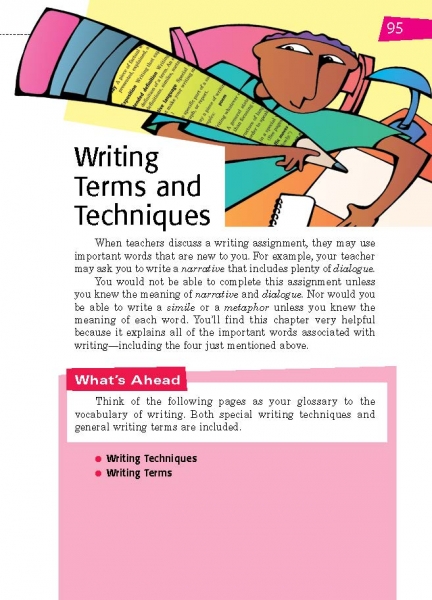
Start-Up Activity
Read and discuss page 95 with students. Ask for volunteers to attempt to define narrative, dialogue, simile, and metaphor. Then ask for volunteers to attempt to define the following terms and techniques: pun, summary, and transition. Afterwards, have students look up the definitions within the chapter. How closely did their definitions match those in the chapter?
Special note: This chapter will be helpful when English Language Learners have questions about terms related to writing instruction. For that reason, be sure that your students are aware of this information early in the school year.
Think About It
“A writer’s brain is like a magician’s hat. If you want to pull something out of it, you have to put something into it first.”
—Mitch Albom

